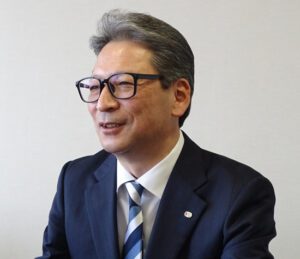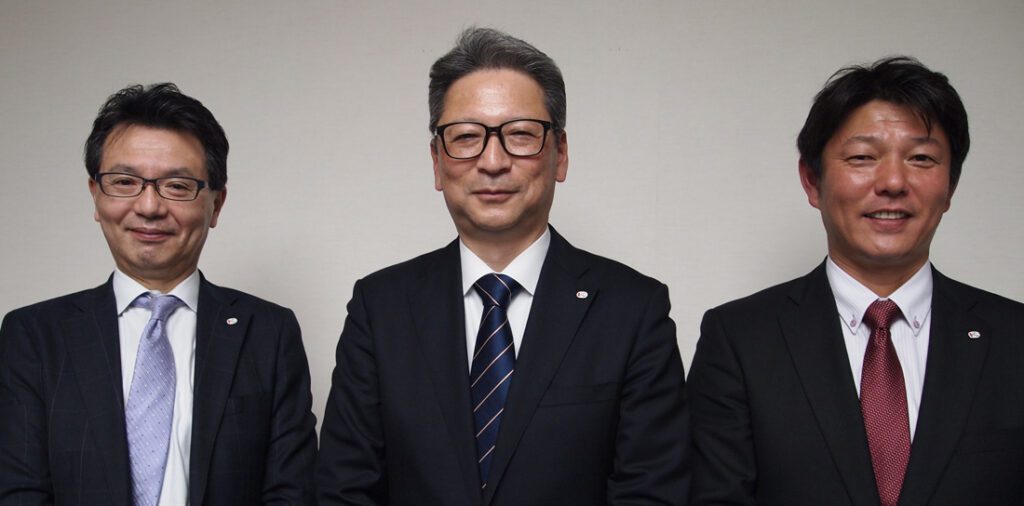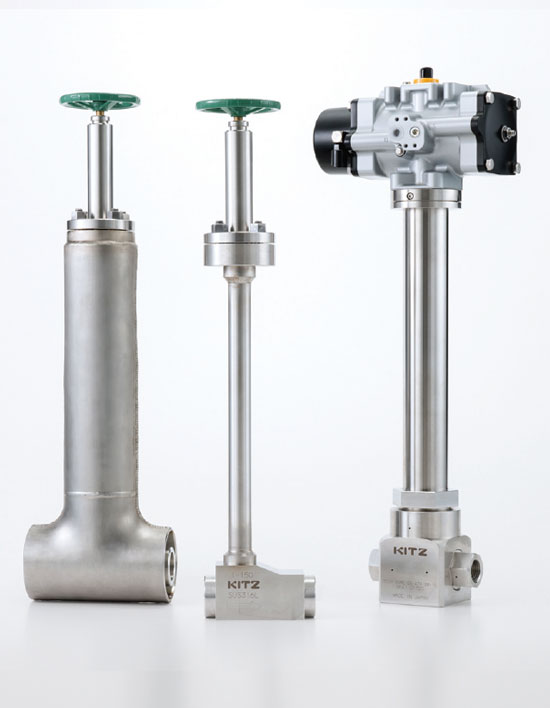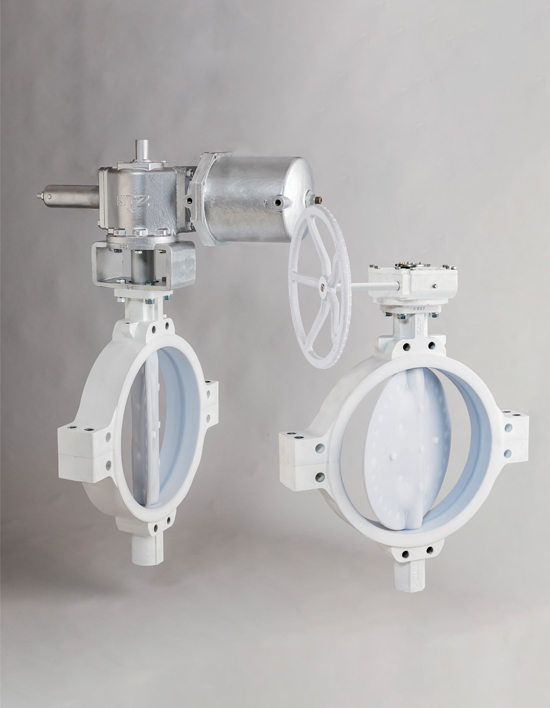Recently, KITZ announced its vision and course for the near future. The company clearly wants to increase its focus on renewable energies and emerging business sectors. Meanwhile, the company wants to keep its current business. “We want to explore new and exciting markets to expand our business while contributing to a more sustainable society.”
By Lucien Joppen

Makoto Kohno, current President and CEO of KITZ, has set the course for KITZ for the short and medium term. Recently, KITZ launched its short- (from 2022-2024) and long-term management plan (2022-2030), the latter aptly named ‘Beyond new heights 2030’.
“In 2021, we celebrated our company’s 70th anniversary”, Mr. Kohno states. “We are very proud of this feat as we have managed to build KITZ to what is today: a multinational flow control company, manufacturing and handling more than 90,000 types of valves – available in diversified designs and made of various materials – and other fluid flow control devices for various industry sectors. However, we can and must not rest on our laurels but adapt to changing markets and subsequent end user requirements for valves and related equipment. In a way, we want to go with the flow or – even better – change the flow.”
Higher peaks
Mr. Kohno vividly remembers a discussion he had with the Board of Directors during the festivities for the 70th anniversary. “The topic was on corporate philosophy and the mission of our company. It struck us that we used the same abstract words that you see in other companies. The next question is: in which way does KITZ distinguish itself in the marketplace? It is a question that forces you to redefine our mission and purposes. In our case, we concluded that we will contribute to the future of a sustainable society through fluid control technology and material development.” As mentioned before, the long-term vision is named ‘Beyond new heights 2030’. “This means going beyond higher peaks, exploring new markets and territories. To put it simply, we can’t continue business as usual alone but we need to move with and adapt to new market developments, keeping in mind that we want to further develop our core business.”
Challenges and opportunities
Given KITZ’s enormous valve portfolio, it doesn’t come at a surprise that the company is covering an impressive array of sectors. The core business markets Mr. Kohno is referring to are: building/facilities, petrochemicals, water treatment and machinery & equipment. In terms of sales, the above markets represent more than half of the company’s sales. Up to 2024, these market segments are expected to rise, according to KITZ. Each market segment has its own challenges and opportunities. For example, in construction the domestic market is overall stagnant. However, the overseas market is strong, especially the development of large data centers in the United States and China. Furthermore, there is strong urban development in emerging economies and a drive towards simpler, more standardized ways of building. “Changes, end connection in requirements for piping methods and materials and increased digitalisation, for example IoT, will affect the way we develop our products”, states Mr. Yukinari Koide, Executive Officer/unit General Manager of the Flow Control Business Unit.
Business overview
The KITZ Group has three business segments: core valve manufacturing (78,6 percent of sales), brass bar manufacturing (20,2 per cent) and other. The KITZ Group manufactures and sells valves, fittings, water purifiers, and industrial filters, all of which are devices used for the control of fluids.
KITZ supplies a broad array of valves in terms of materials and designs that are used in various applications (residential, industrial). Production processes in industries ranging from semiconductors to oil refining and petrochemicals also rely on KITZ valves.
In addition, the group has a large overseas production network. By manufacturing products in the best location for each requirement, the Group’s companies can supply products with prices, delivery schedules, and services that meet customers’ expectations.
KITZ’s unique selling points, according to KITZ:
• Brand value, and long history and knowledge
• Integrated production system providing full quality control
• Global production network (Japan, Thailand, Taiwan, China, India, Spain, Germany Brazil and Korea)
• Multinational sales network
• All-round valve manufacturing (designs, materials, sizes etc.)
Core markets
KITZ is also quite positive regarding the prospects for its petrochemicals business. “We expect oil and gas demand to increase in this decade”, Mr. Koide says. “This is especially the case in emerging economies that have an increased need to power their economies and societies. Also in mature economies, the need for fossil fuels will be there, even with the increased market share of renewable energies.” As for flow control, the need for (environmentally) safe flow control products and digitalisation (IoT, diagnostics etc.) will drive market growth. Water treatment for KITZ is mainly specialized treatment that is designed to supply purified or ultrapure water for specific sectors such as semiconductors or pharmaceuticals.
Finally, the machinery/equipment market offers opportunities for KITZ to focus on the handling of more environmental-friendly refrigerants. “Weight reduction, downsizing and automation are key words for us to develop the best possible solutions.”
Growth markets
Apart from the above core markets, KITZ has identified four growth markets that are expected to outperform the company’s core market sales growth.
First of all, the market for semiconductor machinery equipment is expected at a CAGR of 9 per cent between 2020 and 2027 (Source: Ocean). According to KITZ, this growth is driven by expanding end markets for semiconductors and related equipment and SSD’s for data centers that are arising over the globe. “We also detect a localization trend in which certain countries are opting to shorten the semiconductor supply chain to safeguard supplies”, the company states.
In line with the growth in semiconductor production, KITZ expects the market for filters for semiconductor photoresists (a thin layer used to transfer a circuit pattern to the semiconductor substrate which it is deposited upon, ed.) to pick up in the coming years. “There is also continued development in this area with innovative, cutting edge products being launched such as immersion ArF and EUV resists.”
Trillion yen market
Specialty chemicals is also a growth market for KITZ. “The industry is geared towards developing and producing specific chemicals that add value to the products they are incorporated in, whether it is in terms of functionalities or other characteristics such as a lower CO2 footprint”, Mr. Koide says.
“To produce these chemicals, production processes need to be upgraded to guarantee more demanding quality specifications. Translated into our product portfolio, this means higher cleanliness and easier maintenance as defining product requirements, for example for our PFA-lined valves.”
KITZ has great expectations for actual deployment of hydrogen/clean energy. “In Japan alone, this market will be worth 1.2 trillion yen (approximately 9 billion euro) in 2030, according to our estimations. We are talking about the entire value chain, from production, to transport, storage and utilization. The impact of hydrogen will be profound as this energy carrier lends itself for multiple use: power generation, storage capacity, mobility and industrial use (see box The hydrogen [r]evolution).”
The hydrogen [r]evolution
According to KITZ, the energy sector is on an irreversible path towards a significantly lower CO2 footprint in the coming three decades. “Major changes are underway in this decarbonization process”, Mr Kohno states. “This evolution is not only taking place in mature – but also in emerging economies. As for Japan, our domestic clients in energy-related markets are focused more on green ammonia and hydrogen. I believe that both plant manufacturers and end users are undergoing major changes in their portfolios. We have to keep up with this portfolio reshuffling. We need to be active in functional chemistry and in the new energy sector. Nevertheless, it is apparent that Japan and the rest of the world are still highly dependent on oil, gas and coal. Therefore, the energy transition will take time to materialize.”
Yasunori Sugita, Executive Officer of the Business Promotion Center (Flow Control Business Unit), states that KITZ is well-positioned to serve this potentially huge market. “We are aiming to cover the full spectrum with our valve portfolio, from production to usage. We have also started a dedicated business in which we manufacture valves for hydrogen stations and complete packaged units for hydrogen stations.”
According to KITZ, (green) hydrogen especially has potential in limited energy infrastructures designed for specific municipalities, remote islands, undeveloped areas or places where disasters have occurred. “With hydrogen, you can produce electricity”, Mr Sugita says. “When combined with solar energy and other energy sources, a stable electricity supply is possible. Additionally, our company has also the needed expertise in water-related know-how such as purifying and sterilizing water to provide basic needs for people in the area.
As for valve selection, considering hydrogen usage for industry, it highly depends on the application. Some valves are designed for considerably higher pressure and/or lower temperature than normal valves. Also, cryogenic service will be required to think about entire hydrogen supply chain.
Two major themes

Zooming out of the aforementioned core and growth markets, two major themes emerge that will have a profound impact on the company: digitalisation and green(er) energy. KITZ intends to invest 37 (billion) yen in next three years to strengthen its expertise and capacity to compete in these areas. Of the above total, most of investment and resource will be devoted to growth markets, the remaining is destined for its core markets.
A major part of these investments will go towards human capital. “The first step is to make use of our existing human resources”, Mr. Kohno says. “On a global scale, we are taking stock of our human resources. From this inventory, we intend to flexibly appoint people across the group who can play an active role in our growth business areas. In growth markets that are relatively new to us, we maybe thinking about outsourcing.”
KITZ Innovation Center
Another significant investment has been the brand-new KITZ Group Innovation Center (KIC). KIC, officially inaugurated during the festivities around the company’s 70th anniversary, is situated on the premises of the KITZ Chino Plant. The facility is expected to be up and running in the spring of 2022. KIC’s scope will include human resource development, technological development, and information dissemination. “For the future development of our Group, it has be-come necessary to improve the conceptual power of employees in the development and design departments further, and to develop an environment that can demonstrate high productivity and develop creative and innovative technologies and enhance information transmission functions to inside and outside the company.”
Among various offices and testing facilities, KIC also features a so-called Innovation Studio to practice Design Thinking, a method of “creating new value with creative concepts and provide innovative solutions for the next generation.”


Liquid hydrogen
When asked about recent innovations, Mr. Sugita mentions several highlights. “We are launching a product which suits to a market need and we plan to continue launching other valves in the future. For the same market, including for semiconductor plant utility, building DHC and data centers, we are stepping up the development and production of large diameter butterfly valves. As mentioned before, hydrogen applications are continuously evolving, such as ready-to-install hydrogen station packages that contain ball valves. Specific for liquid hydrogen, there is a national consignment development project by NEDO (New Energy and Industrial Technology Development Organization). Our large-diameter valves for liquefied hydrogen for GTL production, carrier and terminal, and compact valves for aircrafts have been adopted by NEDO. As part of this business arrangement, we have started working for them since last year.”
Maintenance service

Another innovation, closely associated with digitalisation, is KITZ’s maintenance solution: a sensor for predicting and diagnosing valve failures combined with a service option.
“Our device, which can be installed at any actuator, monitors the valve operating angle and speed to measure the valve torque which is an indicator of valve performance”, Mr. Koide says. “If the torque operation becomes cumbersome or heavy, this can be characterized as unusual behavior possibly leading to failures. This year, we started a service that prevents valve troubles by predictive detection of valve malfunction by reading the abnormality in torque by speed and time, picks up the signal. Predictive diagnosis is performed using AI.”
KITZ also offers a service package by which it provides external monitoring and signal-ing customers when it is about time for maintenance. “We only recently started up this business, therefore we have limited this service so far to ball and butterfly valves with pneumatic actuators, but in the future we would like to expand to businesses that detect torque but also other abnormalities e.g. for linear type valves and for electric actuators.”
About this Featured Story
This Featured Story is an article from our Valve World Magazine April 2022 issue. To read other featured stories and many more articles, subscribe to our print magazine.
“Every week we share a new Featured Story with our Valve World community. Join us and let’s share your Featured Story on Valve World online and in print.”


